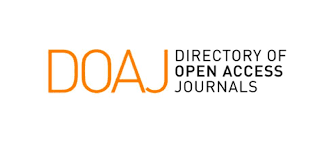Study of Physical and Chemical Properties of Groundwater Contaminated by Palm Oil Mill Effluent Based on Laboratory Scale
Abstract
This study examines how mixing groundwater and palm oil mill effluent affects groundwater quality. Groundwater and palm oil mill effluent samples were mixed in the laboratory with different concentration ratios, namely 0%, 25%, 50%, 75%, and 100%. The mixture was tested using five water quality parameters, namely Biochemical Oxygen Demand (BOD), Chemical Oxygen Demand (COD), Dissolved Oxygen (DO), power of Hydrogen (pH), and Total Suspended Solid (TSS). The water quality standards for these five parameters refer to Government Regulation Number 22 of 2021. The study results showed that increasing the concentration of palm oil mill effluent in the groundwater mixture caused a decrease in groundwater quality. The COD and BOD values ??in the mix with a concentration of 25% to 100% palm oil mill effluent exceeded the class 4 water quality standards set for plant irrigation, with a maximum COD reaching 1506 mg/L and a maximum BOD of 378 mg/L. The DO parameter decreased with increasing concentration of palm oil mill effluent, indicating a decrease in dissolved oxygen in the water. However, the pH and TSS values ??remained within the standard range, although TSS increased with increasing waste concentration. These results indicate that groundwater pollution by palm oil liquid waste significantly impacts the decline in water quality. Groundwater contaminated with palm oil mill effluent with a concentration of more than 25% is unsuitable for irrigation purposes (class 4) or for other higher water class categories. The percentage changes in BOD, COD, pH, and TSS values ??were positive, while the DO parameter experienced a percentage change with a negative value along with the increasing concentration of palm oil mill effluent.
Downloads
References
[2] P.W. Simangunsong, T. Wahyudi and R. Rahmahwati, Rancang Bangun Alat Panen Kelapa Sawit Mekanis Menggunakan Metode Triz, Integr. Ind. Eng. Manag. Syst., vol. 7, no. 2 , 2023, pp. 32–38.
[3] E. Heryadi, Hermanto and A. Susanty, Potensi Biogas dan Energi dari Limbah Data (Tandan Kosong Kelapa Sawit (TKKS), Serat Mesocrap dan Lumpur) Industri Kelapa Sawit di Kalimantan Timur, J. Ris. Teknol. Ind., vol. 15, no. 2, 2021, pp. 487–497.
[4] K.E.K. Francis, N'G.K. Remi, and A. Ouattara, Valorization of the Energy Potential of Liquid Wastes Effluents: Case of an Oil Palm Agro-Industry in a Tropical Humid Zone, Int. J. Energy Environ. Sci., vol. 4, no. , 1, 2019, pp. 10-17.
[5] H.R. Pujono, S. Kukuh, R. Evizal, et al., The Effect of POME Application on Production and Yield Components of Oil Palm in Lampung, Indonesia, IOP Conf. Ser. Earth Environ. Sci., vol. 648, 2021, pp. 1-7.
[6] Irvan, T. Bambang, W. Vivian and T. Yoshimasa, Methane Emission from Digestion of Palm Oil Mill Effluent (POME) in a Thermophilic Anaerobic Reactor, Internat. J. of Sci. and Eng., vol. 3, no. 1, 2012, pp. 32–35.
[7] S.U. Kalsum, L. Gusri dan J. Junardi, Analisis Kualitas Air dan Status Mutu Air Sungai Batang Asam Akibat Limbah Cair Kelapa Sawit Menggunakan Metode Indeks Pencemaran, J. Daur Lingkung., vol. 1, no. 2, 2018, pp. 41-45.
[8] Peraturan Menteri Lingkungan Hiduo dan Kehutanan Republik Indonesia Nomor 5 Tahun 2021, Tata Cara Penerbitan Persetujuan Teknis dan Surat Kelayakan Operasoanl Bidang Pengendalian Pencemaran Lingkungan, 2021.
[9] A.N. Fitria, V.S. Gunawan and Mardiah, Study of the Utilization of Palm Oil Industry Liquid Waste, Konversi, vol. 10, no. 1, 2021, pp. 31–40.
[10] P.M. Raja, Giyanto dan S. Barus, Karakteristik Kandungan Unsur N, P Dan K Limbah Cair Kelapa Sawit Kolam Anaerob Dengan Kontak Kuantitas Bentonit, J. Agrium, vol. 18, no. 2, 2021, pp. 95-101.
[11] R. Yuna dan V. Mardina, Pengujian Karakteristik Kimia pada Limbah Cair Kelapa Sawit di Pabrik X, J. Biol. Samudra, vol. 1, no. 1, 2019, pp. 1–8.
[12] Peraturan Pemerintah Nomor 22 Tahun 2021, Tentang Pedoman Perlindungan dan Pengelolaan Lingkungan Hidup, 2021.
[13] S. Siregar dan D. Kiswiranti, Analisi Kualitas Air Tanah Akibat Pengaruh Sungai Klampok yang Tercemar Limbah Industri di Kecamatan Bergas Semarang Jawa Tengah, J. Mns. dan Lingkung, vol. 26, no. 1, 2020, pp. 36.
[14] E. Asokawati, A. Imam dan S. Marlina, Analisis Kualitas Air Tanah dan Air Permukaan di Sekitar TPA Km 14 Kota Palangkaraya, J. Tek. SILITEK, vol 2, no. 1, 2022, pp. 08–16.
[15] E. Kusniawati dan H. Budiman, Analisa Sifat Air Injeksi Berdasarkan Parameter pH, TSS, TDS, DO dan Kesadahan, J. Tek. Patra Akad., vol. 11, no. 2, 2021, pp. 9–21.










